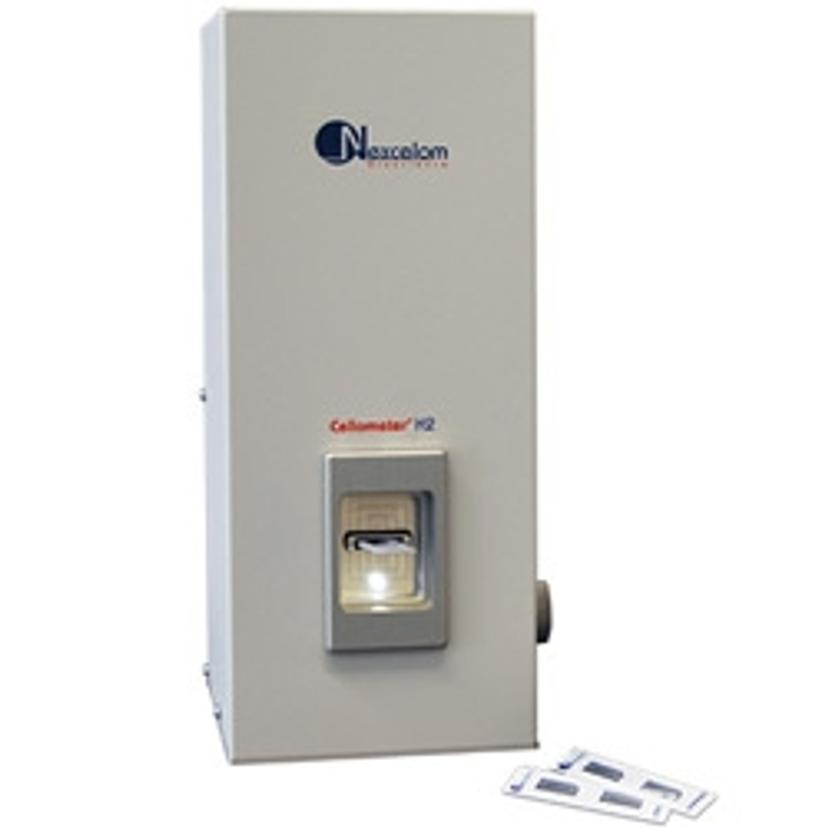Improving Cell Counting & Viability Accuracy Beyond Trypan Blue
Dr. Leo Chan answers your questions about the advantages of a standardized automated cell counting method for cell therapy
5 Dec 2018
Cell counting is an important step in all stages of cellular therapy. The need for an accurate and consistent cell counting method is crucial for the development and manufacturing of CAR-T under GMP/GLP conditions. Assays are therefore required to qualify selected cell counting methods, to ensure robust and consistent cell measurement. Manual counting with trypan blue and hemacytometers is still the most prevalent method, despite several inherent issues with the technique that can cause inaccuracy in both cell count and viability.
The Cellometer method has gone through rigorous qualification assays to provide rapid and accurate measurement of PBMCs, splenocytes, and apheresis samples at any stage of CAR-T cell therapy, from patient sample collection, transduction, to patient infusion. In a recent SelectScience® webinar, Dr. Leo Chan of Nexcelom Biosciences discusses the advantages of Cellometer automated cell counters over traditional trypan blue and manual counting methods.
If you missed the live webinar, you can now watch it on demand at a time that’s convenient for you. Read on for highlights from the webinar’s live question and answers session.
Watch Webinar NowSS: Does AO bind to nucleotides that could be present in the media after the lysing cells/long cultures? And if so, how do you correct for that background?
Leo: We have seen it before, but usually it's right after cell lysing you can still see free nuclei flowing around. But, if you're doing a long culture, we have also seen that the AO signal often decreases. That signal becomes very dim, so there's a difference between that signal and the actual cell. You can also gate those small objects out by size gating using the Cellometer, so you don't pick those objects up when you're trying to count the cells.

SS: How should we prepare cell samples to perform the qualification assays?
Leo: As there are many different parameters for doing qualification methods, it’s important that you sample properly. If you're testing a regular cell line, make sure you have enough cells so you can make samples ranging from very high concentration to very low concentration, giving you a good dynamic range for your cell counting method.
Sample prep is very important. When you're getting the sample from flasks or tubes, you have to make sure that every single step is consistent. If you pipette up and down 10 times, keep it the same. Make sure that your sample is mixed properly and vortex it so you're always getting as uniform a sample as possible.
There are multiple publications that say pipetting is the number one source of error for this type of qualification. If your sample preparation is not done properly, then you're going to have inconsistencies and variation that may disqualify your counting method. However, depending on how you do the testing, you have to look at all parameters and then look at what the best criteria are for your facility, for your CAR-T process.
SS: In our CAR-T process, we find that cells that are cultured for six to eight days don't take up AO very well. Have you observed that as well? And any guess as to the physiology that drives that process?
Leo: Yes, we have also seen this. There are a couple of things that may be happening here. One is, after a long culture time, sometimes the pH may shift a little bit, affecting uptake of AO. We are working on another dye similar to AO that will take up much more readily than AO, stay more localized and be much brighter.
One other possibility that we have seen with long cultures is that there are objects that look like cells that have formed. We did AO/PI staining and Hoechst and PI staining. All these are nuclear dyes. We got similar cell counts with all of these nuclear dyes. We also did a manual counting of the brightfield and trypan blue. For this method we got more cells, more objects counted. Those objects that are not taken up with the AO or the Hoechst dye, don't seem to have nuclei. We did another stain called calcein AM to look at enzymatic staining. The objects without nuclei are enzymatically active so we were labeling those objects ‘ghost cells’, due to the apparent lack of nucleus.

SS: Are there other problems with trypan blue staining?
Leo: We found that one problem was red blood cell contamination in the brightfield. Another is the morphology change and storage problem with trypan blue. If you leave it for a long time, it starts to crystallize in the solution. You then have to filter it, otherwise when you stain cells, you see crystals that may look like cells which you can mistakenly count.
Besides underestimating the dead cells, in a hemocytometer counting, we have also observed that if you have a lot of cells, then it takes a long time to count them. Over that period of time, the trypan blue will have a lot of effect. Maybe you can count them within five minutes, but even within that five minutes, it does affect the cells. And if you're counting something very sensitive like hepatocytes, trypan blue can kill them within the first two minutes, causing cell viability to drop by 10% to 15%.
SS: Is the AO/PI stain toxic to the cells?
Leo: Of course, you can’t leave it with the cells for too long. However, we can stain cells with AO/PI for up to two hours. The viability throughout was about 80% to 85%. That's within two hours. What we usually recommend if you have a lot of samples, let's say if you need to count maybe 20 samples, is that you stain five samples first, put them into the counting chamber and count them, then do the next five and so on. Keep in mind there are differences between different cell types. If you're doing primary cells, they may be a little bit more sensitive, but within two hours there's not too much change in viability.
Find out more on this topic by watching the full webinar on demand>>
SelectScience runs 3-4 webinars a month across various scientific topics, discover more of our upcoming webinars>>

